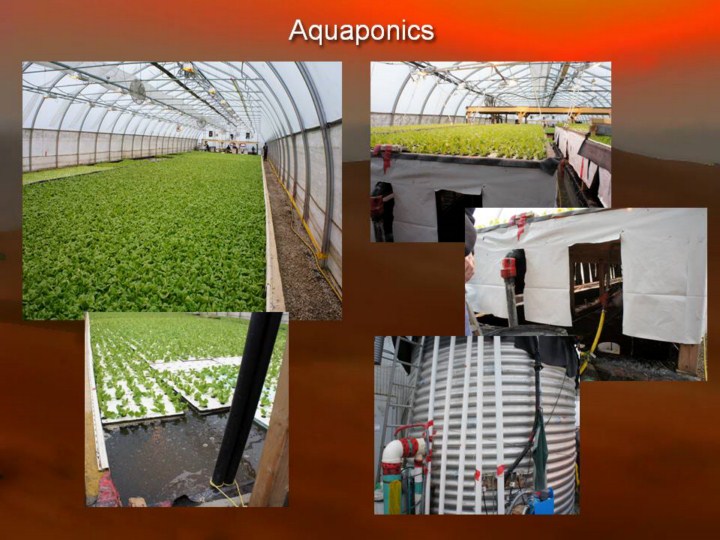| front |1 |2 |3 |4 |5 |6 |7 |8 |9 |10 |11 |12 |13 |14 |15 |16 |17 |18 |19 |20 |21 |22 |23 |24 |25 |26 |27 |28 |29 |30 |31 |32 |33 |34 |35 |36 |37 |38 |39 |40 |41 |42 |43 |44 |45 |46 |47 |48 |49 |50 |51 |52 |53 |review |
 |
This is a facility that grows lettuce hydroponically, but does not use chemical fertilization. Instead, it grows trout in tanks under its seedling beds and uses the water in which the trout are grown to provide essentially all of the nutrients to grow the lettuce. This is a marriage of aquaculture and hydroponic horticulture and is called aquaponics. It is, in fact, a modern version of very old practices developed and used in Asia. This modern system, however, monitors water quality carefully. Solids are removed and a gravel bed populated by nitrosifying and nitrifying bacteria is used to convert the ammonia that the fish produce to nitrates before the water goes into the lettuce-growing tanks. Aquaculture today provides about half of the fish people consume, but much of it remains nutrient inefficient and polluting because the nutrient-rich waste from the fish is not managed and pollutes both fresh and salt-water bodies. The nutrient wastes can be managed in open bodies of water, not just in closed aquaculture systems.
|